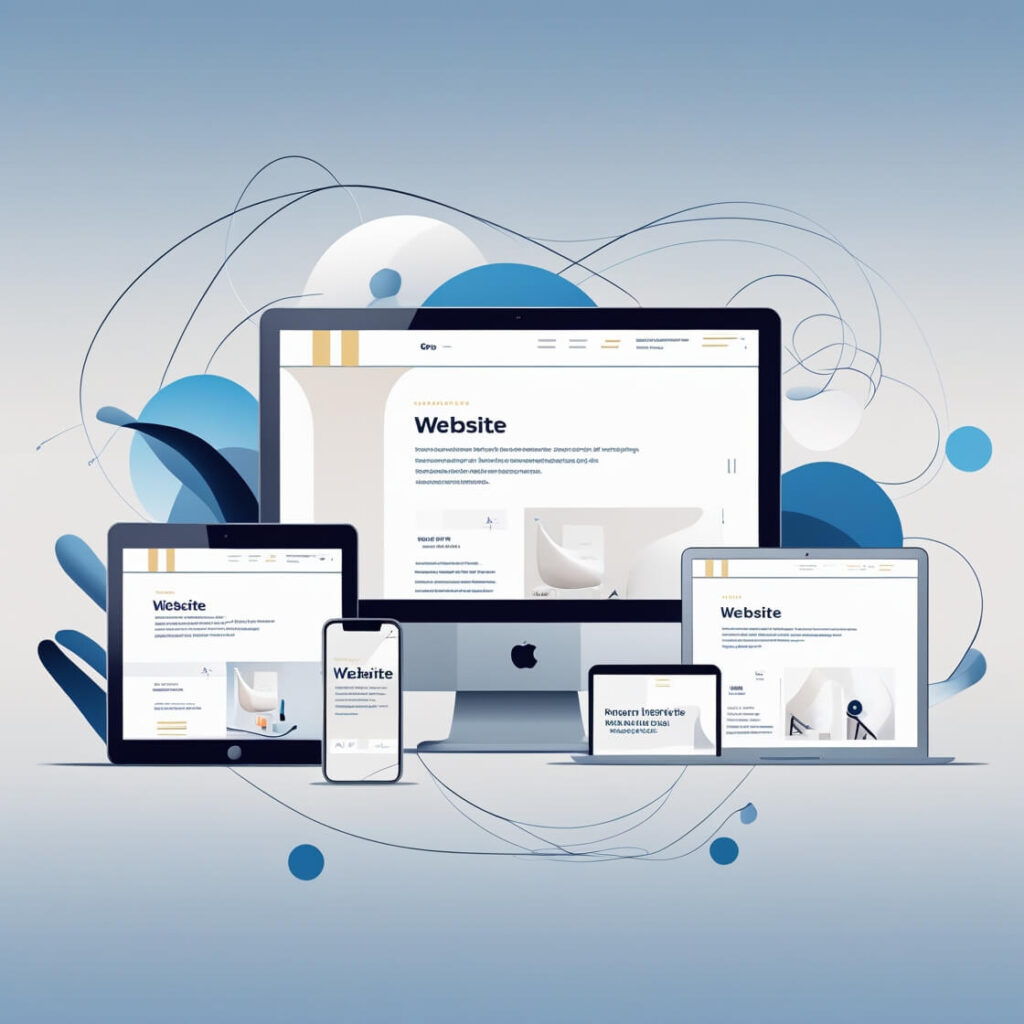H2: Introduction to Consistent Design
In today’s digital world, where users interact with brands across multiple platforms, maintaining a consistent design is essential for building brand recognition, trust, and user engagement. Whether it’s a website, social media, mobile apps, or print materials, a unified visual identity helps create a seamless experience for the audience.
Why Consistency Matters in Branding and User Experience
- Brand Recognition: A well-defined and consistent design reinforces brand identity, making it easier for users to recognize and recall a brand. This consistency builds familiarity and trust over time.
- Professionalism and Credibility: A brand with a cohesive design across platforms appears more credible and reliable. In contrast, inconsistent visuals can make a company look unorganized or untrustworthy.
- Improved User Experience: When users encounter a consistent design, they intuitively understand how to navigate and interact with the brand’s content, reducing confusion and improving engagement.
- Higher Conversion Rates: A seamless experience across different platforms increases user confidence, leading to more interactions, sign-ups, and purchases.
The Impact of Inconsistent Design on Audience Perception
- Confusion and Frustration: If a website, social media, and email marketing campaigns all have different design styles, users may struggle to recognize the brand, leading to frustration.
- Weakened Brand Identity: A lack of consistency dilutes the brand’s image, making it harder to establish a strong presence in the market.
- Decreased Engagement and Loyalty: Users are more likely to engage with a brand that presents a clear and unified experience rather than one with scattered and uncoordinated visuals.
Key Takeaway
A consistent design is the foundation of a strong brand identity and a positive user experience. By ensuring uniformity across platforms, businesses can enhance credibility, foster trust, and drive better engagement.
H2: Establishing a Strong Brand Identity
A strong brand identity is the foundation of a consistent design across all platforms. It defines how your audience perceives your brand and ensures that all visual and messaging elements align seamlessly. Establishing a well-defined brand identity helps create a cohesive and recognizable experience for users, regardless of the platform they engage with.
Key Elements of a Strong Brand Identity
To maintain consistency, focus on these essential components of branding:
- Logo and Visual Elements
- Your logo should be easily recognizable and adaptable to different platforms (website, social media, mobile apps, print materials).
- Maintain a uniform color palette, typography, and imagery to create a cohesive look.
- Use scalable design files (SVG, PNG) to ensure high-quality visuals across devices.
- Brand Colors and Typography
- Choose a primary and secondary color scheme that reflects your brand’s personality.
- Select consistent fonts for headers, subheaders, and body text to maintain readability and professionalism.
- Ensure colors and typography remain the same across websites, social media, and marketing materials.
- Brand Voice and Messaging
- Define a consistent tone and style for all written content—whether formal, friendly, or playful.
- Align messaging across blogs, advertisements, and customer communications to reinforce your brand’s identity.
- Create a brand style guide to ensure consistency in tone and language.
- Imagery and Graphics
- Use a consistent photo editing style, iconography, and illustrations that match your brand’s aesthetic.
- Stick to a defined visual theme to maintain brand recognition across different media.
- User Experience and Design Layout
- Maintain a structured and familiar layout across all platforms to enhance usability.
- Keep buttons, navigation menus, and content placement intuitive and consistent to ensure a seamless experience for users.
How a Strong Brand Identity Improves Consistency
- Enhances recognition: Users will instantly associate design elements with your brand.
- Builds trust and credibility: A professional and polished look increases user confidence.
- Creates a seamless experience: Users enjoy a unified journey, regardless of the platform they engage with.
By establishing a clear brand identity and applying it consistently, businesses can create a cohesive and impactful design that strengthens brand loyalty and engagement.
H2: Designing for Multiple Platforms
Creating a consistent design across multiple platforms requires a strategic approach to ensure a seamless user experience, regardless of the device or medium. Whether designing for websites, mobile apps, social media, or print materials, maintaining visual and functional coherence is crucial for brand recognition and user trust.
1. Understanding Platform-Specific Requirements
Each platform has unique specifications and design guidelines. Consider the following when designing for different platforms:
- Web Design:
- Use responsive design to adapt layouts to different screen sizes.
- Optimize images and typography for desktop and mobile viewing.
- Ensure fast loading speeds by using compressed files and optimized code.
- Mobile Applications:
- Follow platform-specific guidelines (iOS Human Interface Guidelines, Android Material Design).
- Prioritize a touch-friendly interface with easy navigation.
- Keep UI elements consistent with your website for a seamless experience.
- Social Media Platforms:
- Adapt graphics to meet size and aspect ratio requirements for different platforms (Instagram, Facebook, LinkedIn, Twitter, etc.).
- Maintain brand consistency in colors, typography, and imagery across posts and advertisements.
- Use templates for posts to keep visuals uniform.
- Print Materials:
- Ensure brand colors remain consistent in CMYK format for print.
- Use high-resolution images (300 DPI) to maintain quality.
- Maintain the same fonts and layout style used in digital platforms.
2. Creating a Flexible Design System
To ensure consistency while allowing for adaptability across platforms, implement a design system that includes:
- Design Components: Create reusable UI components (buttons, icons, layouts) that maintain uniformity across platforms.
- Style Guides: Define rules for color palettes, typography, and spacing to ensure consistency.
- Grid Systems: Use adaptable grid layouts to maintain balance and structure across different screen sizes.
3. Optimizing User Experience Across Devices
- Cross-Device Compatibility: Test designs on various devices (smartphones, tablets, desktops) to ensure uniform functionality.
- Accessibility Standards: Implement ADA-compliant design practices, including proper contrast ratios, legible fonts, and screen reader compatibility.
- User Feedback & Testing: Conduct usability testing across platforms to refine and optimize the design for different audiences.
By tailoring your design approach to multiple platforms while maintaining a unified brand identity, you create a seamless and engaging user experience that strengthens brand trust and recognition.
H2: Using Typography and Colors for Cohesion
Typography and colors play a crucial role in maintaining a consistent and cohesive design across multiple platforms. They help establish brand identity, create visual harmony, and enhance user experience. Here’s how you can effectively use typography and colors for a unified design.
1. Establishing a Consistent Typography Style
Typography directly impacts readability, brand personality, and user perception. To create consistency:
- Choose a Primary and Secondary Font:
- Select a primary font for headlines and a secondary font for body text.
- Ensure readability across different devices and screen sizes.
- Stick to web-safe or widely available fonts to avoid inconsistencies.
- Maintain Font Hierarchy:
- Use consistent font sizes, weights, and styles for headings, subheadings, and body text.
- Define scaling rules for different screen sizes (e.g., larger fonts for mobile readability).
- Keep Line Spacing and Alignment Uniform:
- Use consistent letter spacing and line height for better readability.
- Maintain uniform text alignment (left-aligned for readability, centered for emphasis).
2. Creating a Harmonious Color Palette
Colors evoke emotions and reinforce brand identity. A well-structured color system ensures brand cohesion.
- Define a Brand Color Palette:
- Choose primary colors that represent your brand (e.g., company logo colors).
- Use secondary colors for accents and highlights.
- Ensure colors work well in both light and dark themes.
- Apply Colors Strategically Across Platforms:
- Maintain consistent background, text, and accent colors in digital and print materials.
- Use a universal hex code system for digital design and CMYK values for print.
- Ensure color contrast for accessibility (WCAG compliance for readability).
- Use Colors to Guide User Experience:
- Apply contrasting colors for call-to-action (CTA) buttons to make them stand out.
- Use neutral backgrounds with bold accent colors for a modern, clean aesthetic.
- Ensure dark mode compatibility by defining color variations for different themes.
3. Unifying Typography and Colors in Branding
To maintain cohesion across multiple platforms, implement:
- A Brand Style Guide: Document font choices, sizes, color codes, and spacing guidelines.
- A Design System: Use a structured design system like Material Design or Tailwind CSS to ensure visual consistency.
- Templates for Consistency: Use preset typography and color styles for social media, website elements, and marketing materials.
By applying typography and colors strategically, you create a visually appealing and recognizable brand identity, ensuring consistency across all platforms.
H2: Tools and Resources for Design Consistency
Maintaining consistency across all platforms is challenging without the right tools. Thankfully, there are a range of tools and resources that can help streamline the design process, making it easier to create unified and consistent experiences across different platforms. Here are some essential tools and resources to help ensure consistency in your design projects:
1. Design Systems and Frameworks
Design systems and frameworks provide a structured approach to creating consistent designs. These resources include pre-defined components, guidelines, and best practices for design consistency across digital products.
- Material Design:
- Google’s Material Design offers a comprehensive framework with guidelines for colors, typography, spacing, and interactive elements that ensure consistency across platforms.
- Apple’s Human Interface Guidelines:
- For Apple products, these guidelines provide a detailed structure for visual consistency, focusing on user experience across all Apple devices.
- Tailwind CSS:
- A utility-first CSS framework that promotes consistency through reusable, customizable components and styles.
2. Design Software for Cross-Platform Consistency
Design software that integrates multiple platform options ensures your designs look consistent, whether viewed on desktop, mobile, or print.
- Adobe XD:
- A powerful tool for designing and prototyping user experiences that can be easily scaled across platforms. With real-time collaboration and easy export options, it ensures designs are aligned across all platforms.
- Figma:
- A popular cloud-based design tool that allows teams to work collaboratively. Its robust design systems, shared components, and consistent styles make it ideal for building and maintaining cohesive designs.
- Sketch:
- Offers powerful vector editing and a clean interface, with numerous plugins and integrations that help maintain consistency across platforms, especially when collaborating with a team.
3. Color and Typography Tools
Using consistent color palettes and typography across all design materials is essential for brand cohesion. Here are some tools to manage colors and fonts effectively:
- Coolors:
- A color palette generator that helps create harmonious color schemes. You can save color sets and easily apply them to your designs for consistency.
- Google Fonts:
- An extensive library of web-safe fonts that can be easily integrated into your website, ensuring consistency in typography across digital platforms.
- FontPair:
- A typography tool that helps you find compatible font pairings, ensuring your font choices align well with your brand’s aesthetic and are consistently used across different platforms.
4. Collaboration and Version Control Tools
Consistency is also about seamless collaboration between team members. These tools help design teams stay aligned while ensuring that everyone is on the same page:
- Zeplin:
- Zeplin bridges the gap between design and development. It creates handoff documents for developers with defined typography, colors, and spacing, ensuring consistency when translating designs into code.
- InVision:
- A platform that helps with prototyping, collaboration, and design handoffs. It allows design teams to maintain consistency by offering live feedback, version control, and updates to ensure everyone works on the same design elements.
- Trello or Asana:
- Project management tools like Trello or Asana help you organize design workflows and ensure that design elements and processes remain consistent across teams and platforms.
5. Design Resources and Libraries
Having access to a library of pre-made design resources can help maintain consistency, especially when designing for multiple platforms at once.
- Envato Elements:
- A subscription-based platform that offers high-quality design assets such as icons, templates, graphics, and stock photos, all of which can be incorporated into your designs for cohesive brand development.
- Iconmonstr:
- A free and simple library of high-quality icons that can be used consistently in your designs to maintain a uniform look across all media.
- Unsplash:
- A free resource for high-resolution stock images that can help ensure your designs use consistent imagery that aligns with your brand’s aesthetic.
By integrating these tools and resources into your design process, you can ensure a more streamlined, efficient, and consistent design output. Whether you’re working on digital or print platforms, these tools can help maintain a unified brand experience and improve the overall quality of your designs.
Conclusion: Achieving Consistency Across All Platforms
Creating a consistent design across multiple platforms is crucial for building a strong and recognizable brand. By following best practices, leveraging the right tools, and maintaining attention to detail, you can ensure that your design stays cohesive, user-friendly, and aligned with your brand’s identity. Whether you’re designing for a website, mobile app, or social media, consistency helps enhance user trust and engagement, making your design experience seamless and impactful.
With the right resources at your disposal—such as design systems, design software, typography tools, and collaborative platforms—you can streamline your workflow and create designs that feel unified across all touchpoints. So, whether you’re just starting out or refining your existing designs, applying these strategies will help you achieve greater design consistency, leading to better user experiences and stronger brand presence.



